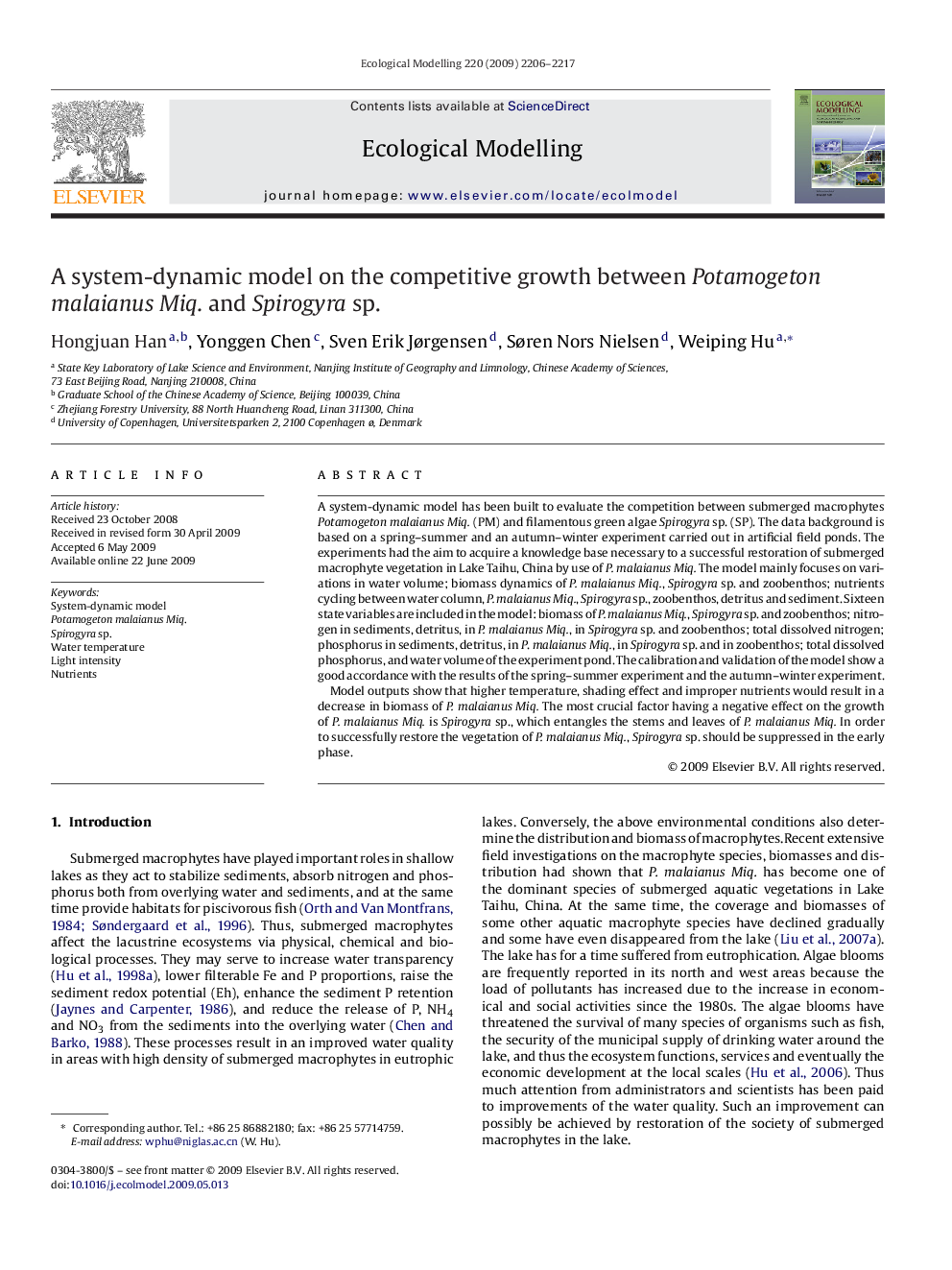| Article ID | Journal | Published Year | Pages | File Type |
|---|---|---|---|---|
| 4377718 | Ecological Modelling | 2009 | 12 Pages |
A system-dynamic model has been built to evaluate the competition between submerged macrophytes Potamogeton malaianus Miq. (PM) and filamentous green algae Spirogyra sp. (SP). The data background is based on a spring–summer and an autumn–winter experiment carried out in artificial field ponds. The experiments had the aim to acquire a knowledge base necessary to a successful restoration of submerged macrophyte vegetation in Lake Taihu, China by use of P. malaianus Miq. The model mainly focuses on variations in water volume; biomass dynamics of P. malaianus Miq., Spirogyra sp. and zoobenthos; nutrients cycling between water column, P. malaianus Miq., Spirogyra sp., zoobenthos, detritus and sediment. Sixteen state variables are included in the model: biomass of P. malaianus Miq., Spirogyra sp. and zoobenthos; nitrogen in sediments, detritus, in P. malaianus Miq., in Spirogyra sp. and zoobenthos; total dissolved nitrogen; phosphorus in sediments, detritus, in P. malaianus Miq., in Spirogyra sp. and in zoobenthos; total dissolved phosphorus, and water volume of the experiment pond. The calibration and validation of the model show a good accordance with the results of the spring–summer experiment and the autumn–winter experiment.Model outputs show that higher temperature, shading effect and improper nutrients would result in a decrease in biomass of P. malaianus Miq. The most crucial factor having a negative effect on the growth of P. malaianus Miq. is Spirogyra sp., which entangles the stems and leaves of P. malaianus Miq. In order to successfully restore the vegetation of P. malaianus Miq., Spirogyra sp. should be suppressed in the early phase.
